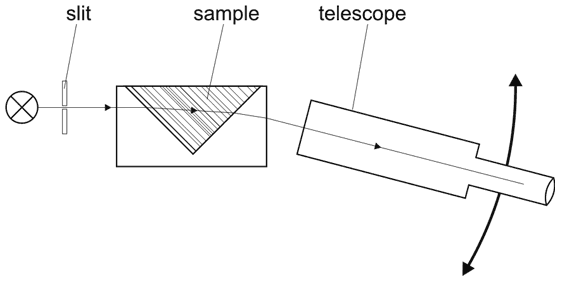All you want to know about refractometers and refractometry.
V block refractometer was initially designed by J.V. Hughes in the laboratories of Chance Brothers Ltd., and its design has been published in 1941. For some unknown reason it is given several different (and wrong) names in the literature - sometimes it is called Pulfrich refractometer and sometimes Hilger-Chance refractometer.
The way v block refractometer is designed makes it probably the easiest one to understand.

V-block refractometer.
The most important part of the v block refractometer is the v-shaped cell, cut in the rectangular block of glass (in practice it is much easier to built the refractometer cell gluing two prisms, but it is shape - not the method of getting it - that matters). Cell walls are perpendicular. Cell is filled with the liquid. Beam of light enters the sample and gets refracted twice at two perpendicular cell walls. Angle at which light exits the refractometer block is a function of refractive index of the sample and of the glass (note additional refraction of the beam leaving the glass; incident beam enters the refractometer at zero angle, so it doesn't get refracted). Knowing the exit angle and the refractive index of the glass we can easily calculate refractive index of the sample.


